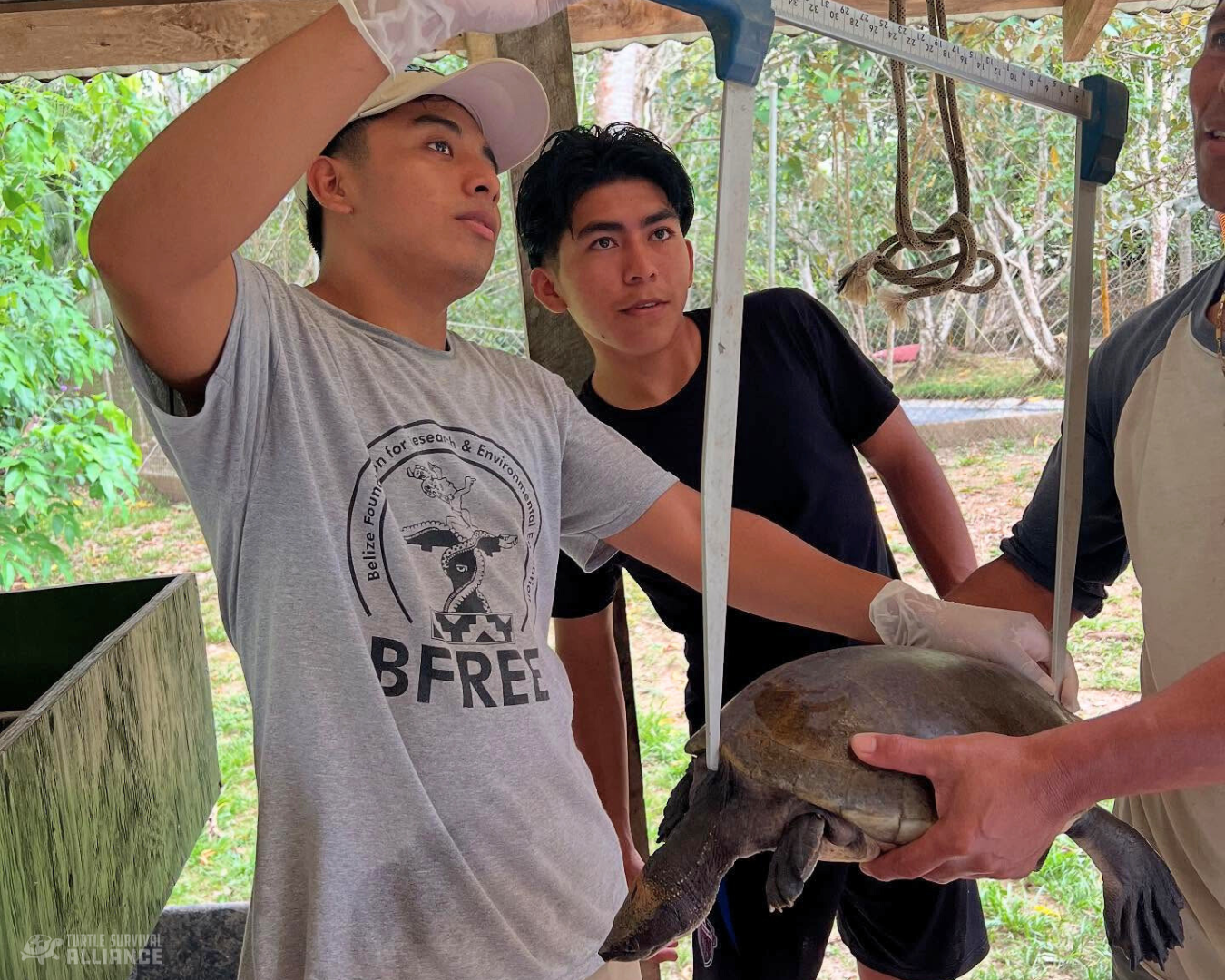We work with our partners in conservation, the Belize Foundation for Research and Environmental Education (BFREE), to ensure the long-term survival of the critically endangered Central American River Turtle (Dermatemys mawii), known locally in Belize as the Hicatee. This work entails managing the Hicatee Conservation and Research Center (HCRC), where we house an adult breeding colony, an incubation facility, and grow-out ponds for hundreds of juveniles who will one day be reintroduced to the wild.
Twice a year, the team at BFREE conducts a health assessment at the HCRC. We asked Heather Barrett, Deputy Director of BFREE, and Turtle Survival Alliance Board Member, a few questions to better understand this process and how it contributes to the overall conservation of this species.
Can you describe what the health assessment entails and why it is required?
To conduct a comprehensive exam of the overall health and reproductive status of the captive population of Central American River Turtles at the HCRC, a health assessment is conducted bi-annually (late February or early March and mid-September). The assessment consists of implementing thorough physical examinations under the guidance of experienced veterinarians. Activities include looking for signs of stress, aggression, or poor health, nutrient deficiencies, and infectious and parasitic diseases, as well as conducting ultrasounds to determine reproductive status and to look for the presence of eggs and follicles.
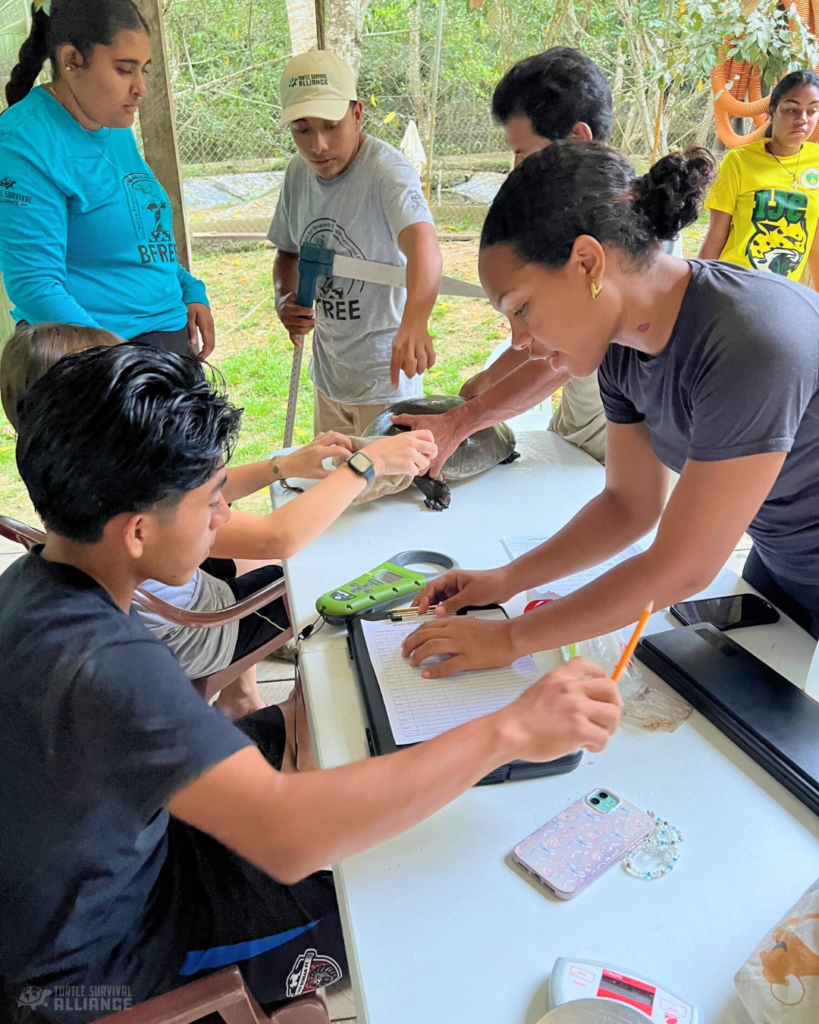
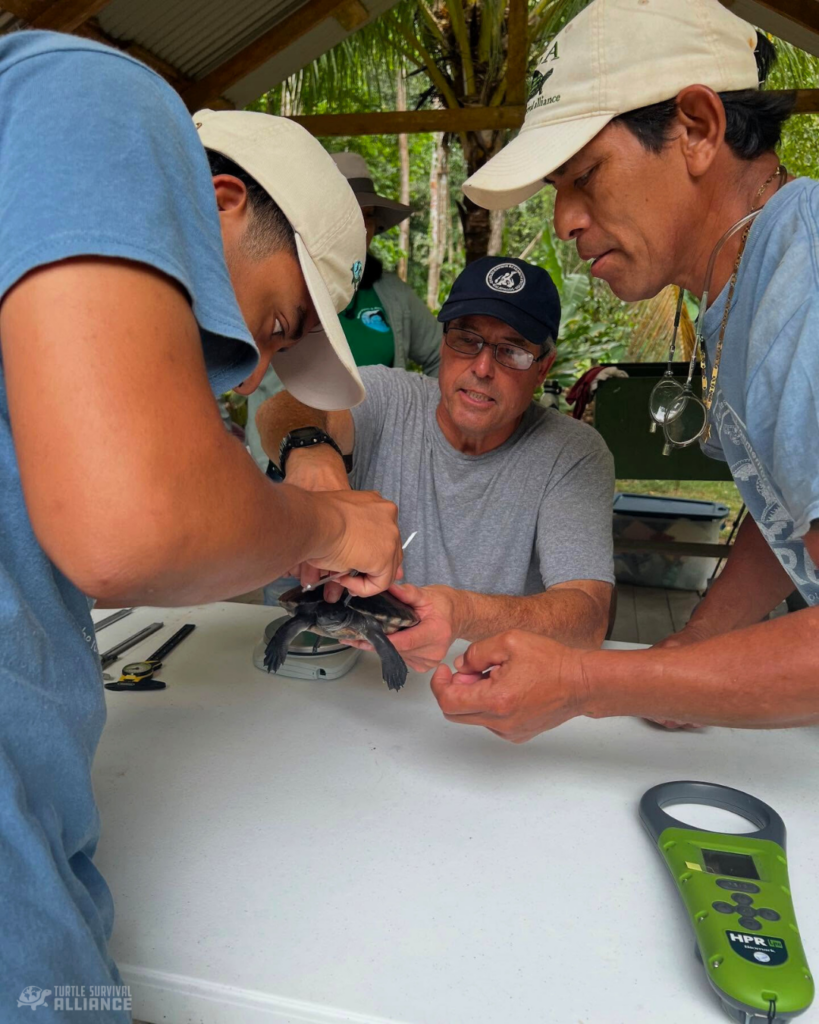
Belize Foundation for Research and Environmental Education (BFREE) staff members, with the support of volunteers, perform health assessments at the Hicatee Conservation and Research Center (HCRC). Photos courtesy of Heather Barrett
Who is involved in the health assessment?
Each health assessment involves BFREE staff, at least one veterinarian, and an assortment of volunteers who might be biologists, students, zookeepers, or simply turtle enthusiasts. This year we had a big team that represented all those categories. We had the BFREE team: Thomas Pop, Manager of the HCRC; Jacob Marlin, Executive Director of BFREE; BFREE Science and Education Fellows Andrew Choco, Samih Young, and Heston Castillo; Rob Klinger, Director of Conservation and Science; and myself.
We were joined by Dr. Isabelle Paquet-Durand, DVM, and Aisha, both of the Belize Wildlife and Referral Clinic (BWRC); Leomar Longsworth, Marie Young, Dasha Garbutt, Clive Erskine, Michelle Molina, and Octavino Chiac of Independence Junior College; Geneva Gomez and Ashira Rancharan of the University of Belize; Kat Raymond of the Birmingham Zoo; and the Huclr/Lucky family: Jiri, Andrea, Sabina, and Toby.
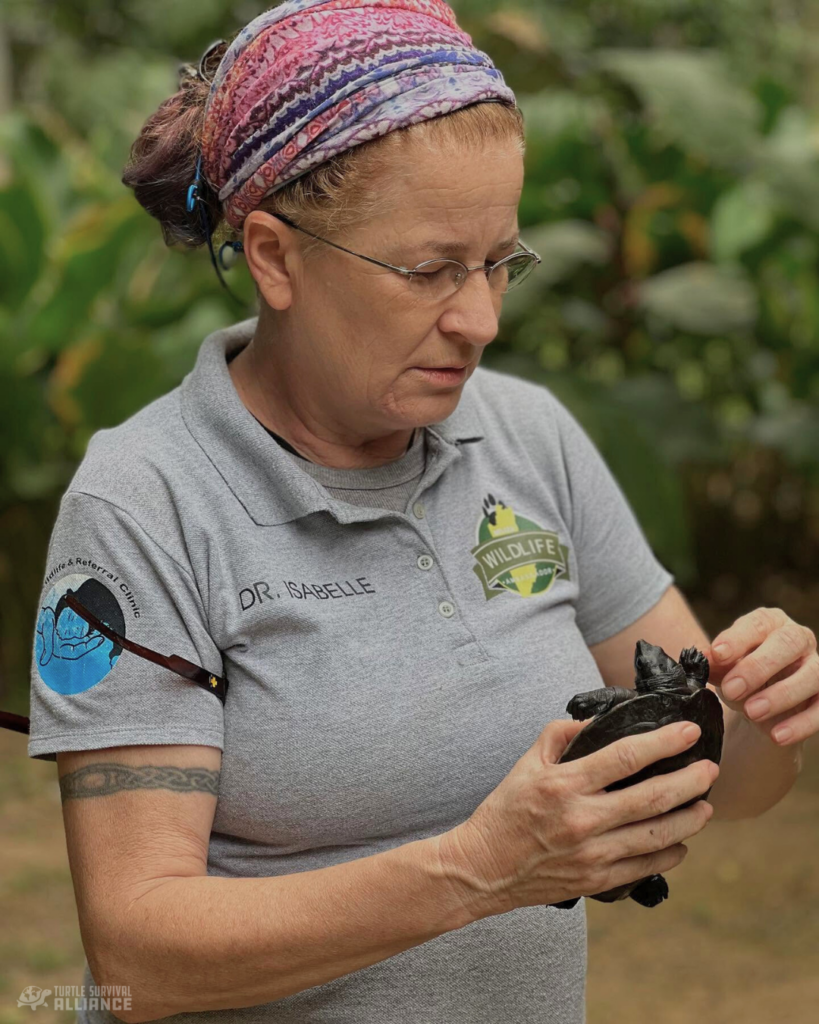
How long have you been performing these assessments?
Health assessments began in September 2014—six months after the HCRC opened. We have implemented them twice annually since that time (with a few exceptions in the early years). It’s hard to believe but this was our 19th Hicatee health assessment!
What kind of information do we learn through them?
We learn a lot from the assessments. We primarily focus on whether a turtle is healthy and growing or experiencing growth challenges, and we also check its reproductive status. Our goal is to ensure that the turtles are in the best possible health while in captivity and are ready to be released into the wild if the opportunity arises.
We may also ask specific questions that we hope to answer within a single assessment or a series of assessments, such as, “At what age do juvenile turtles begin to display sexual dimorphism?”
Our health assessments also benefit the humans who participate by creating opportunities for students, scientists, zookeepers, and veterinarians to expand their skills to the field and allowing them to work with a rare and unique species—one which most people never have access to.
This health assessment was unique because most of the volunteers were local students from Independence Junior College and University of Belize. We were excited to offer this opportunity to passionate, motivated college students who wanted to gain some hands-on experience with this species.
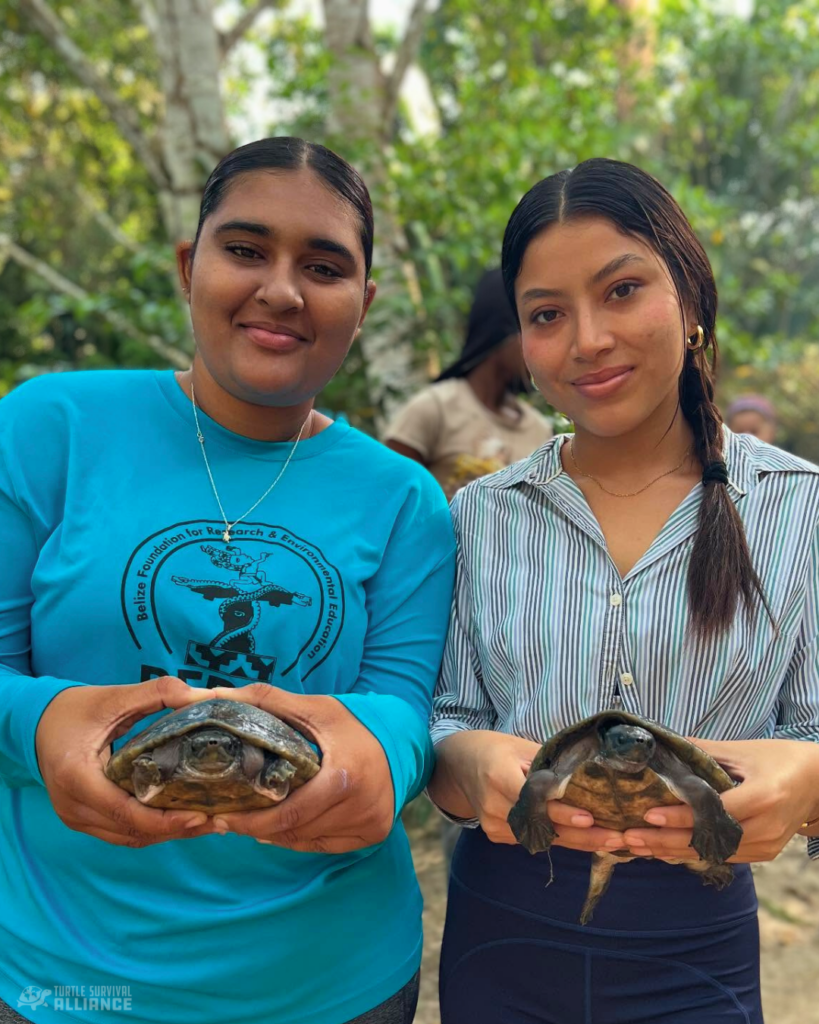
What have we learned this year?
Through ultrasounds implemented by Dr. Isabelle and her assistant, Aisha, we were able to determine that some of the females were still holding shelled eggs that had not been deposited into nests. So, we anticipate more clutches being laid. We also reduced the population density in the ponds when we released nearly 500 captive-hatched turtles last year, and we were interested to see the impacts that more space and improved water quality had on the resident turtles’ health. We were happy to note that the turtles’ overall health was excellent. Shells were hard, eyes were bright, tongues were pink, and turtles continued growing. We were definitely pleased with the results.

In 2024, BFREE released 476 turtles into the wild. Since 2020, they have successfully reintroduced 1,002 head-start Central American River Turtles, all of which were produced and reared at the HCRC. The tireless efforts of the BFREE staff and supporting volunteers facilitating the health assessments have resulted in these rewilding efforts, ultimately growing the population of this turtle in need.
Header image: BFREE Science and Education Fellow Andrew Choco measures a Central American River Turtle during the health assessment. Photo courtesy of Heather Barrett
